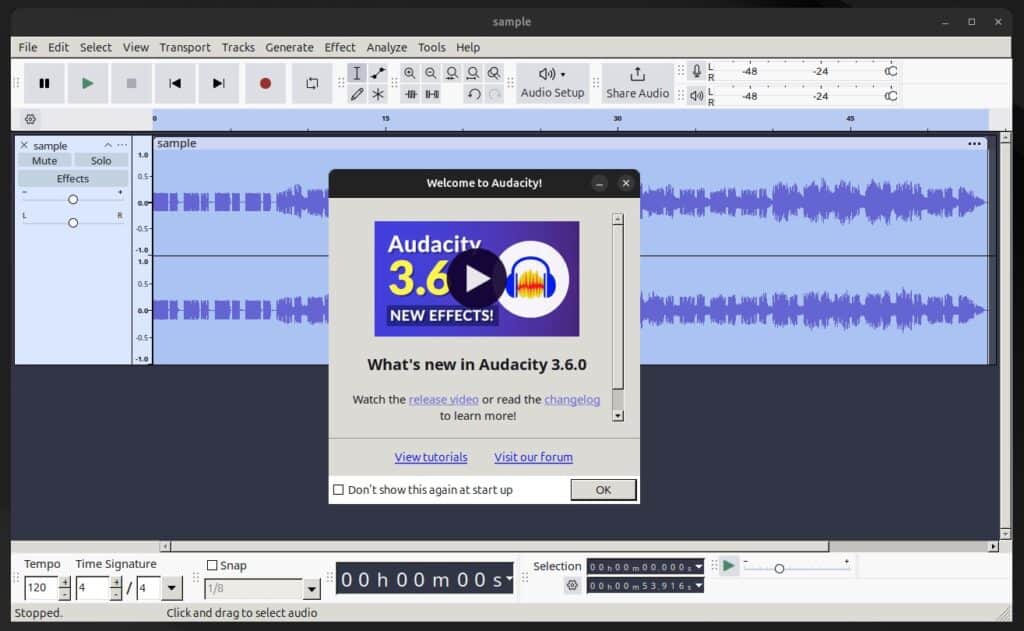Almost three months after its previous 3.5 release, Audacity, the widely acclaimed cross-platform open-source audio editing software, rolls out its latest version, 3.6, with exciting new features and improvements for amateur and professional audio engineers. Here they are.
Audacity 3.6 Highlights
Introducing Master Effects
The headline feature of this release is the introduction of ‘Master Effects.’ This new capability allows effects to be applied to the entire project simultaneously, streamlining workflows and enabling more cohesive audio manipulation.
Detailed guidance on using these new master and real-time effects is available on the Audacity website.
New Tools for Dynamic Range Control
Audacity 3.6.0 also debuts an overhauled compressor and limiter, replacing the older versions. These enhancements include a gain reduction history for real-time effect monitoring.
Factory presets for these tools are accessible through the updated ‘Presets & Settings‘ interface, promising users a range of ready-to-use settings for various audio scenarios.
Visual and Usability Enhancements

Audacity has introduced new dark and light themes in response to user feedback, improving visibility and reducing eye strain during extended editing sessions.
Users can easily switch themes via the ‘Preferences‘ -> ‘Interface‘ menu. Additionally, the classic theme remains available, and enthusiasts can still install older or custom themes if desired.
Performance Improvements
The new version boasts significant performance improvements, which are particularly noticeable when working on larger projects or using larger displays. This makes Audacity more efficient and snappier in response times, enhancing user experience across the board.
Expanded Compatibility and Functionality
Audacity 3.6.0 adds support for FFmpeg 7, enhancing its compatibility with various media formats. New functional enhancements include the ability to paste audio files directly into the project using “Ctrl+V,” themeable alternative waveform colors, and a more streamlined ‘Extras‘ > ‘Export‘ > ‘Export Selected Audio‘ option.
Bug Fixes and Additional Updates
The update also addresses several bugs, including the auto-scrolling issue during new track recordings and fixes for the macro manager. Improvements in UI elements like the high contrast theme and Linux’s Ogg export functionality ensure a smoother and more reliable user experience.
For detailed information about all changes in the latest version, visit the changelog.
